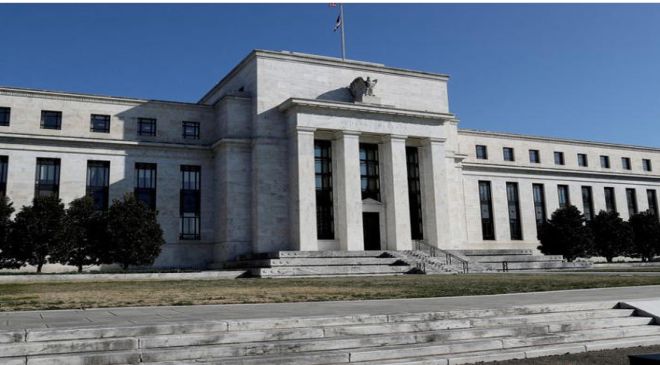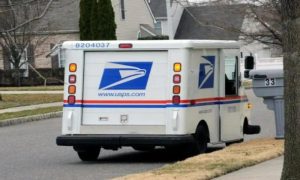Find a Qualified Financial Advisor
Finding a financial advisor doesn’t have to be hard. SmartAsset’s free tool matches you with up to three fiduciary financial advisors that serve your area in minutes. Each advisor has been vetted by SmartAsset and is held to a fiduciary standard to act in your best interests. Start your search now.
The offers and details on this page may have updated or changed since the time of publication. See our article on Business Insider for current information.
Affiliate links for the products on this page are from partners that compensate us and terms apply to offers listed (see our advertiser disclosure with our list of partners for more details). However, our opinions are our own. See how we rate banking products to write unbiased product reviews.
Also Read– Social Security 2025: How Next Years COLA Compares To the Past 5 Years

- The Federal Deposit Insurance Corporation is a government agency that protects consumers’ money and regulates financial institutions.
- The FDIC insures up to $250,000 per depositor, per insured bank on specific account types.
- If your bank folds, the FDIC will return insured money back to you.
Whenever a bank fails, anyone with savings might reasonably wonder: What happens if my bank fails?
While there’s no reason to expect it, this is where the FDIC comes in. Having an FDIC-insured account means your money is protected, even in the event of a bank failure. We’ve provided information on what the FDIC is, how the FDIC insures bank deposits, what’s covered under FDIC insurance.
Also Read– This Was the Average Social Security Benefit in 1964, and Here’s What It Is Now
Introduction to the FDIC
Definition and purpose
The FDIC, which stands for Federal Deposit Insurance Corporation, is an independently run U.S. agency. It protects consumers’ deposits in the event a bank or savings association fails. In doing so, the FDIC’s primary goal is to maintain stability in the economy while boosting public confidence in the U.S. financial system.
“One of the biggest things is to remember that deposit insurance is paid for by the banks and protects depositors in the unlikely event that their bank fails,” says Julianne Breitbeil, a senior media relations officer at the FDIC. “It’s not personal insurance for miscellaneous losses.”
While the FDIC operates independently, when you deposit money in an FDIC-insured account, it’s the U.S. government that guarantees your money will always be accessible.
Brief history
Congress established the FDIC in 1933 in response to the staggering number of bank failures during the Great Depression. Today, the FDIC insures more than 4,500 financial institutions and helps keep money safe in banks during recessions.
Although the FDIC is the one insuring your money, the funds actually come from the banks that are FDIC-insured. The FDIC will pay insurance to account holders with deposit accounts up to the insured limit. All of the best banks — in fact, most of the banks that are worth banking with — are FDIC-insured.
Important dates in FDIC history
- June 16, 1933: President Franklin D. Roosevelt signed the Banking Act of 1933 — also known as the Glass-Steagall Act — into law, which created the FDIC. The Banking Act was created during the nation’s most severe banking crisis, and its goal was to regulate interbank control and restore faith in the country’s banking system.
- July 5, 1934: A bank customer by the name of Lydia Lobsiger receives the first FDIC disbursement of $1,250 when her bank, the Fond Du Lac State Bank in East Peoria, failed.
- October 3, 2008: At the height of the Great Recession, Congress signed off on $700 billion to fund the Troubled Asset Relief Program (TARP). Of that $700 billion, $245 billion would go toward bolstering the capital of financial institutions. Between 2008 through 2013, 500 US banks failed.
Also Read– Best 5-Year CD Rates for October 2024: Lock In Returns for the Longer Term
How the FDIC protects your money
Insurance coverage limits
When you have a deposit account at an FDIC-backed bank — such as a savings account, checking account, money market account, or certificate of deposit — your deposits are backed up to at least $250,000 per bank, per person, per account type. You don’t need to sign up for FDIC insurance. If it’s an FDIC-backed bank, you’re automatically covered up to that amount.
How to insure bank deposits beyond the FDIC limit
If you have more than $250,000 in an account, there are things you can do to protect the excess funds.
1. Spread your deposits across different banks
By spreading funds among multiple FDIC-insured banks, you can insure all of your funds beyond the FDIC’s $250,000 limit. So, say you receive a $325,000 inheritance. You can keep up to $250,000 at your current bank and open an account at a different bank for the remaining $75,000. The only downside to this strategy is that you’ll have to keep track of multiple accounts at different banks.
2. Use the Certificate of Deposit Account Registry Service
The Certificate of Deposit Account Registry Service (CDARS) allows you to access FDIC insurance on large deposits. With CDARS, you can access millions of dollars of FDIC coverage on your CDs. The way it works is you invest your money with a CDARS network member and the money is divided into CDs issued by different CDARS banks.
3. Join a credit union
Putting some of your money in a credit union is another good way to protect yourself. Similar to the FDIC, the National Credit Union Association insures credit union deposits up to $250,000 per account holder, per ownership category.
4. Add a joint owner
A single account under your name alone is insured up to $250,000. But if you open a joint account with two or more owners, the funds are insured up to $500,000. So you can double the amount insured in your accounts by adding a joint owner.
5. Open accounts with different ownership categories
Another way to protect your money is by opening accounts with different ownership categories. FDIC insurance applies per owner and ownership category. For instance, let’s say you have a personal account with $250,000 and a business account with $100,000 at the same bank. Both accounts would be covered because each is under a different category.
Also Read– The 2025 Social Security COLA Will Be Announced in October. Here’s What That Means for Retirees.c
Types of accounts covered
The FDIC covers deposit accounts and some transfer services. This includes:
- Savings accounts
- Checking accounts
- Money market accounts
- Certificates of deposits
- Cashier’s checks
- Money orders
The FDIC doesn’t insure investments, insurance, and some other money transfer services. Some excluded accounts and services are:
- Payment apps
- Investment accounts
- Insurance policies
- Investments in stocks, bonds, or mutual funds
- Life insurance policies
- Annuities
- Safe deposit boxes or their contents
- Municipal securities
- Money in apps such as PayPal or Venmo
An exception to PayPal is when you add money to your PayPal account using direct deposit. In this case, that money will be eligible for what’s known as FDIC pass-through insurance.
When you buy cryptocurrency or add money to your Venmo account using remote capture or direct deposit, funds from your Venmo balance also can be backed up by FDIC pass-through insurance.
Although funds in a payment platform such as Venmo or PayPal aren’t typically backed by the FDIC, there might be exceptions, so be sure to comb over the fine print.
FDIC’s role in the banking system
While the role of the FDIC in bank failures is important, that’s not the only role the FDIC plays. It provides a number of functions to keep banks accountable and consumers’ money safe:
- Protects your money: The FDIC offers deposit insurance and protects your money in the event of a bank failure. Sometimes, another bank might act as the “buyer,” and buy the bank that is faltering. If a bank doesn’t step in and buy the failing bank, the FDIC will handle paying the account holder directly.
- Regulates financial institutions: It also oversees financial institutions for consumer protection, safety, and soundness. The FDIC also ensures that they’re compliant with consumer protection laws such as the Truth in Savings Act (TISA), the Expedited Funds Availability Act (EFA Act), and the Electronic Fund Transfer Act (EFTA). The FDIC also promotes fair lending statutes and regulations.
- Resolves failed banks: The FDIC is also the “receiver” of a failed bank, so it sells the bank’s assets and settles its debts, including claims for deposits in excess of the insured limit.
- Provides educational resources: The FDIC not only protects consumers, it has a mission to educate them, too. From educational programs like Money Smart and robust consumer assistance resources, to podcasts on consumer protection and banking history and the Electronic Deposit Insurance Estimator (EDIE), which can help you determine how coverage applies to you, there is plenty of material for consumers to explore.
How the FDIC is funded
Insurance premiums from banks
The FDIC is primarily funded through premiums paid by covered banks. The amount each bank has to pay is determined by how risky it is to cover. The FDIC also makes money through investing in things like treasury bonds. It is not funded through taxes.
The deposit insurance fund
The FDIC has to keep some funds on hand so it can pay out insurance if banks fail. That on-hand amount is called the deposit insurance fund. The FDIC tries to keep money worth 2% of total insured funds in the DIF. The FDIC publishes how much money is in the DIF in its Quarterly Banking Profile.
FDIC vs. NCUA: Understanding the differences
FDIC for banks
The primary difference between FDIC and NCUA insurance is what financial institutions they cover. The FDIC only oversees banks and savings associations. With the FDIC, you’re covered for $250,000 per person, per account type, and per bank. If you already use a bank, it’s probably covered by the FDIC.
NCUA for credit unions
In comparison, the National Credit Union Administration oversees credit unions but otherwise is pretty similar. It’s also government-run, and it also provides $250,000 coverage per person, per account type, and per institution. And just like the FDIC, most credit unions in the US are covered by the NCUA.
There aren’t any strong reasons to prefer FDIC insurance over NCUA insurance, or vice versa. If you’re wondering if you should go with a credit union vs a bank, you’ll have to use another metric.
How to check if your bank is FDIC-insured
To find out if your financial institution is FDIC-insured, you can ask a bank representative, look for the FDIC sign at your bank, or you can use the FDIC’s BankFind tool, explains Breitbeil.
This tool lets you access specific information about FDIC-backed banks, such as the current operating status, its website, branch locations, and the regulator to reach out to for more information or help.
Also Read- Social Security COLA raise: How much will recipients get in 2025?
Impact of the FDIC on the economy
Promoting public confidence
The FDIC helps people keep confidence in banks by ensuring they don’t need to worry about losing money in accounts that are advertised as risk-free. With the FDIC, people don’t need to worry about their bank collapsing and leaving them with nothing.
The FDIC’s ease for depositors, government backing, and transparency all help Americans feel assured that their money is covered and that the FDIC won’t fail the same way that banks might.
Preventing bank runs
Bank runs are what happens when a large amount of people fear that their bank is about to fail, so they pull all their money out of the bank at once so they don’t lose it. Since banks’ funds aren’t 100% liquid, banks generally don’t have enough money on hand to completely pay out the majority of customers’ accounts. So, if a bank run happens, banks generally aren’t able to pay for it.
This means that, even if a bank wasn’t going to fail, a bank run might very well cause it to.
Since most people don’t have more than $250,000 in their bank accounts, the FDIC prevents bank runs by keeping people from worrying they’ll lose their money if they don’t act fast. This means that banks are less likely to fail overall.
FDIC FAQs
What does the FDIC insure?
The FDIC insures deposits at member banks up to $250,000 for a single-owner account and $500,000 for a joint account. This is per-bank and per-account type.
How can I tell if my bank is FDIC-insured?
Banks will generally list if they’re FDIC-insured on their websites, but if you can’t see anything mentioning it, you can also call and ask the bank directly. You can also use the FDIC’s BankFind tool.
What happens if my bank fails?
If an FDIC-insured bank fails, the FDIC will either provide you with a new account at another insured bank or reimburse you for the insured amount.
Does the FDIC cover investments like stocks and bonds?
No, the FDIC only insures deposit accounts, such as savings accounts, checking accounts, money market accounts, and certificates of deposit.
How is the FDIC funded?
The FDIC is funded through premiums paid by member banks and savings associations. It is not funded through your taxes.









































